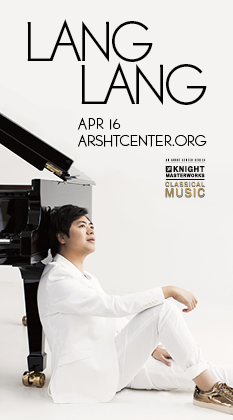Claremont Trio turns in uneven performance in Palm Beach

A large audience turned out on Sunday afternoon for a concert by the Claremont Trio at the Society of Four Arts in Palm Beach. A rarity by Spanish cellist and composer Gaspar Cassado complemented early Beethoven and less familiar Dvorak on the program’s bill of fare.
Founded in 1999 when its players were still students at the Juilliard School, the Claremont Trio has won some major awards and released a string of recordings, yet proved an uneven chamber ensemble on Sunday. Violinist Emily Bruskin’s intonation tends to waver and her rounded tone can turn hard and edgy. Cellist Julia Bruskin, her sister, is the standout, bringing richness of tone and depth of feeling to the group’s varied repertoire. The fluent, crisp playing of pianist Donna Kwong is a steadying force in the trio’s sometimes rocky musical voyages. Too often the Claremont threesome substitutes blandness for the spark of inspired music making.
Beethoven’s youthful Piano Trio in E-flat Major, Op.1, No.1 suffered from a stodgy, powdered- wig opening Allegro and an Adagio cantabile that slighted Beethoven’s singing line. The rhythmic Scherzo finally ignited some sparkle and much of the Haydnesque wit of the final Presto was realized, the Bruskin sisters attacking the second subject with zest.
Cassado’s Piano Trio in C Major—also performed by the Eroica Trio in Coral Gables the same weekend—is a pleasing, well crafted essay that gravitates between a soundtrack for a travelogue of Spain and ersatz de Falla with some spicy dissonances thrown in for good measure. An alluring melody for solo cello highlights the second movement, followed by a series of more acerbic variations led by the piano. Julia Bruskin’s honeyed sound and wide-ranging palette of tonal colors elevated the performance level. Indeed Cassado’s opus received the afternoon’s most exuberant reading, the trio playing at full throttle.
The excellent violist Beth Guterman joined the players for Dvorak’s Piano Quartet No. 2 in E-flat Major. Composed in 1889 (four years before Dvorak’s American sojourn), this infrequently played masterpiece weds the composer’s trademark Czech folk influences with the dark storm clouds of Brahmsian romanticism.
The keyboard line often becomes the score’s protagonist. While Kwong ably articulated that role, the group’s small-scale performance shortchanged the drama and sweeping power of the opening movement. Violinist Bruskin brought some welcome sinew to the tempestuous central episode of an otherwise earthbound Lento. The rousing Slavonic rhythms of the third movement were taken at a spirited clip and the players managed the finale with infectious élan. While the performance was satisfactory in a prettified manner, the musicians failed to illuminate the joy and poignancy of Dvorak’s formidable artistic canvass.
Posted in Performances
Leave a Comment
Tue Feb 9, 2010
at 12:31 pm
No Comments





